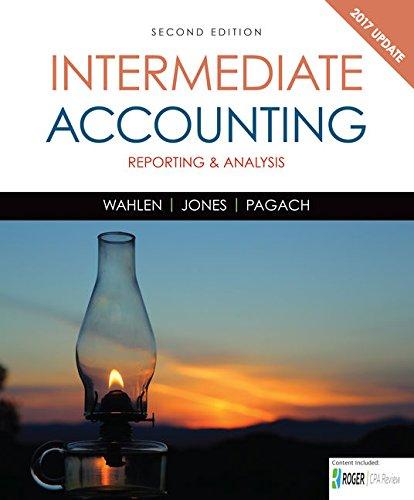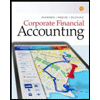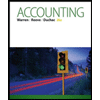
Concept explainers
Issuances of Stock Cada Corporation is authorized to issue 10,000 shares of $100 par, convertible, callable preferred stock and 80,000 shares of no-par, no-stated value common stock. There are currently 7,000
- 1. Purchased land by issuing 640 shares of preferred stock and 1,000 shares of common stock. Preferred and common are currently selling at $113 and $36 per share, respectively, No reliable appraisal of the land is available.
- 2. Same as Transaction 1, except that land is appraised at $104,000, and the preferred stock has no current market value.
- 3. Issued, for $99,000 cash, a combination of 400 shares of preferred stock and bonds payable with a face value of $50,000. Currently, the preferred stock is selling for $120 per share and the bonds at 104.
- 4. Same as Transaction 3, except that the bonds do not have a current market value.
- 5. Same as Transaction 3, except that the preferred stock does not have a current market value.
- 6. Preferred shareholders (who had originally paid the corporation $110 per share for their stock) convert 6,500 preferred shares into 19,500 shares of common stock. The current market prices of the preferred stock and the common stock are $120 and $41 per share, respectively.
- 7. The corporation calls the 7,000 shares of preferred stock (originally issued at $110 per share) at $123 per share. Common stock is currently selling for $42 per share. Shareholders elect not to convert into common stock.
- 8. Same as Transaction 7, except that shareholders owning 2,000 shares of preferred stock elect to convert each share into 3 shares of common stock The remaining 5,000 preferred shares are retired.
Required:
Next Level Prepare the
Prepare the necessary journal entries to record the given transactions and give the reasons for the values used in entries.
Explanation of Solution
Journal: Journal is the method of recording monetary business transactions in chronological order. It records the debit and credit aspects of each transaction to abide by the double-entry system.
Rules of Debit and Credit: Following rules are followed for debiting and crediting different accounts while they occur in business transactions:
- Debit, all increase in assets, expenses and dividends, all decrease in liabilities, revenues and stockholders’ equities.
- Credit, all increase in liabilities, revenues, and stockholders’ equities, all decrease in assets, expenses.
Common stock: These are the ordinary shares that a corporation issues to the investors in order to raise funds. In return, the investors receive a share of profit from the profits earned by the corporation in the form of dividend.
Preferred stock: Preferred stock is the cash raised by the company by issuing preferred shares. This investment fetches a preferential right for dividend for the preferred stockholders over the common stockholders.
Treasury Stock: It refers to the shares that are reacquired by the corporation that are already issued to the stockholders, but reacquisition does not signify retirement.
Prepare the necessary journal entries to record the given transactions and give the reasons for the values used in entries:
1. Purchased land by issuing 640 shares of preferred and 1,000 shares of common stock:
| Date | Accounts title and Explanation | Post ref. | Debit ($) | Credit ($) |
| Land | $108,320 | |||
| Common stock, no par | $36,000 | |||
| Preferred stock, $100 par | $64,000 | |||
| Additional paid in capital on preferred stock | $8,320 | |||
| (To record the purchase of land by issuing shares) |
Table (1)
Reason for the amounts used: As the values of the preferred stock and common stock are available, thus, their aggregated value is allocated to land.
2. Purchased land by issuing 640 shares of preferred and 1,000 shares of common stock:
| Date | Accounts title and Explanation | Post ref. | Debit ($) | Credit ($) |
| Land | $104,000 | |||
| Common stock, no par | $36,000 | |||
| Preferred stock, $100 par | $64,000 | |||
| Additional paid in capital on preferred stock | $4,000 | |||
| (To record the purchase of land by issuing shares) |
Table (2)
Reason for the amounts used: As the values of the common stock and land are available, thus, common stock value is deducted from the land value to assign the value to preferred stock.
3. Issue of preferred stock and bonds payable for $99,000.
| Date | Accounts title and Explanation | Post ref. | Debit ($) | Credit ($) |
| Cash | $99,000 | |||
| Premium on bonds payable | $1,480 | |||
| Bonds Payable | 50,000 | |||
| Preferred stock, $100 par | $40,000 | |||
| Additional paid in capital on preferred stock | $7,520 | |||
| (To record the package sale of preferred stock and bonds payable) |
Table (3)
Working note 1: calculate the allocation of proceedings.
| Particulars | Calculations | Amount ($) |
| Preferred stock | $47,520 | |
| Bonds | $51,480 | |
| $99,000 |
Table (4)
Reason for the amounts used: As the cash was received for the sale of package of securities, the value assigned to both the securities is based on the relative fair value of each security.
4. Issue of preferred stock and bonds payable for $99,000. Bonds don’t have current market value.
| Date | Accounts title and Explanation | Post ref. | Debit ($) | Credit ($) |
| Cash | $99,000 | |||
| Premium on bonds payable | $1,000 | |||
| Bonds Payable | 50,000 | |||
| Preferred stock, $100 par | $40,000 | |||
| Additional paid in capital on preferred stock | $8,000 | |||
| (To record the package sale of preferred stock and bonds payable) |
Table (5)
Reason for the amounts used: As the values of cash and preferred stock are available, the values of the preferred stock are deducted from the cash to compute the value allocated to bonds.
5. Issue of preferred stock and bonds payable for $99,000. Preferred stock doesn’t have current market value.
| Date | Accounts title and Explanation | Post ref. | Debit ($) | Credit ($) |
| Cash | $99,000 | |||
| Premium on bonds payable | $2,000 | |||
| Bonds Payable | 50,000 | |||
| Preferred stock, $100 par | $40,000 | |||
| Additional paid in capital on preferred stock | $7,000 | |||
| (To record the package sale of preferred stock and bonds payable) |
Table (6)
Reason for the amounts used: As the values of cash and bonds are available, the values of the bonds are deducted from the cash to compute the value allocated to preferred stock.
6. Preferred stocks are converted into common stock.
| Date | Accounts title and Explanation | Post ref. | Debit ($) | Credit ($) |
| Preferred stock | $650,000 | |||
| Additional paid in capital on preferred stock | $65,000 | |||
| Common stock, no par | $715,000 | |||
| (To record the conversion of preferred stock into common stock) |
Table (7)
Reasoning for the amounts used: preferred stock’s book value is allotted to the common stock value. The reason is it will not result into record the gain or loss on the transaction involved in its own capital stock.
7. Corporation calls the preferred stock.
| Date | Accounts title and Explanation | Post ref. | Debit ($) | Credit ($) |
| Preferred stock | $700,000 | |||
| Additional paid in capital on preferred stock | $70,000 | |||
| Retained earnings | $91,000 | |||
| Cash | $861,000 | |||
| (To record the conversion of preferred stock into common stock) |
Table (8)
Reasoning for the amounts used: The difference between the cash proceedings and the original contributed capital on the preferred stock is treated as a decrease in the retained earnings thus; it will not result in a recorded gain or loss on a transaction involving the corporation’s own contributed capital.
8. Corporation calls the preferred stock and shareholders elected to convert one preferred stock into 3 common stocks.
| Date | Accounts title and Explanation | Post ref. | Debit ($) | Credit ($) |
| Preferred stock | $200,000 | |||
| Additional paid in capital on preferred stock | $20,000 | |||
| Common stock, no par | $220,000 | |||
| (To record the conversion of preferred stock into common stock) |
Table (9)
Reasoning for the amounts used: preferred stock’s book value is allotted to the common stock value. The reason is it will not result into record the gain or loss on the transaction involved in its own capital stock.
| Date | Accounts title and Explanation | Post ref. | Debit ($) | Credit ($) |
| Preferred stock, $100 par | $500,000 | |||
| Additional paid in capital on preferred stock | $50,000 | |||
| Retained earnings | $65,000 | |||
| Cash | $615,000 | |||
| (To record the conversion of preferred stock into common stock) |
Table (10)
Reasoning for the amounts used: The difference between the cash proceedings and the original contributed capital on the preferred stock is treated as a decrease in the retained earnings thus; it will not result in a recorded gain or loss on a transaction involving the corporation’s own contributed capital.
Want to see more full solutions like this?
Chapter 15 Solutions
Cengagenowv2, 1 Term Printed Access Card For Wahlen/jones/pagach’s Intermediate Accounting: Reporting And Analysis, 2017 Update, 2nd
Additional Business Textbook Solutions
Financial Accounting, Student Value Edition (5th Edition)
Marketing: An Introduction (13th Edition)
Macroeconomics
Intermediate Accounting (2nd Edition)
Operations Management
Principles of Economics (MindTap Course List)
- Give me solutionarrow_forwardOver the units in a batcharrow_forwardPell Company acquires 80% of Demers Company for $500,000 on January 1, 2022. Demers reported common stock of $300,000 and retained earnings of $210,000 on that date. Equipment was undervalued by $30,000 and buildings were undervalued by $40,000, each having a 10-year remaining life. Any excess consideration transferred over fair value was attributed to goodwill with an indefinite life. Based on an annual review, goodwill has not been impaired. Demers earns income and pays dividends as follows: 2022 2023 2024 Net income $ 100,000 $ 120,000 $ 130,000 Dividends 40,000 50,000 60,000 Assume the partial equity method is applied. Compute the noncontrolling interest in Demers at December 31, 2024. Multiple Choice $146,800 $160,800 $107,800 $80,000 $140,000arrow_forward
 Intermediate Accounting: Reporting And AnalysisAccountingISBN:9781337788281Author:James M. Wahlen, Jefferson P. Jones, Donald PagachPublisher:Cengage Learning
Intermediate Accounting: Reporting And AnalysisAccountingISBN:9781337788281Author:James M. Wahlen, Jefferson P. Jones, Donald PagachPublisher:Cengage Learning Cornerstones of Financial AccountingAccountingISBN:9781337690881Author:Jay Rich, Jeff JonesPublisher:Cengage Learning
Cornerstones of Financial AccountingAccountingISBN:9781337690881Author:Jay Rich, Jeff JonesPublisher:Cengage Learning Corporate Financial AccountingAccountingISBN:9781305653535Author:Carl Warren, James M. Reeve, Jonathan DuchacPublisher:Cengage Learning
Corporate Financial AccountingAccountingISBN:9781305653535Author:Carl Warren, James M. Reeve, Jonathan DuchacPublisher:Cengage Learning- Principles of Accounting Volume 1AccountingISBN:9781947172685Author:OpenStaxPublisher:OpenStax College
 Accounting (Text Only)AccountingISBN:9781285743615Author:Carl Warren, James M. Reeve, Jonathan DuchacPublisher:Cengage Learning
Accounting (Text Only)AccountingISBN:9781285743615Author:Carl Warren, James M. Reeve, Jonathan DuchacPublisher:Cengage Learning College Accounting, Chapters 1-27 (New in Account...AccountingISBN:9781305666160Author:James A. Heintz, Robert W. ParryPublisher:Cengage Learning
College Accounting, Chapters 1-27 (New in Account...AccountingISBN:9781305666160Author:James A. Heintz, Robert W. ParryPublisher:Cengage Learning





